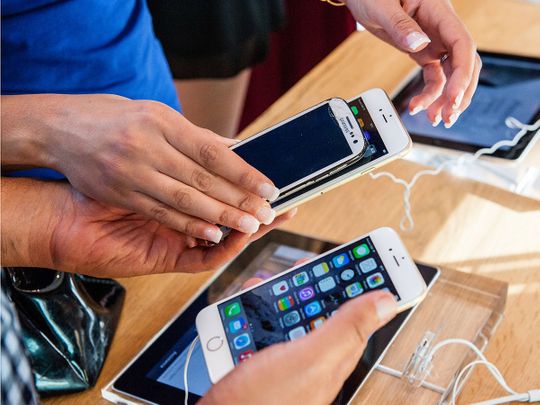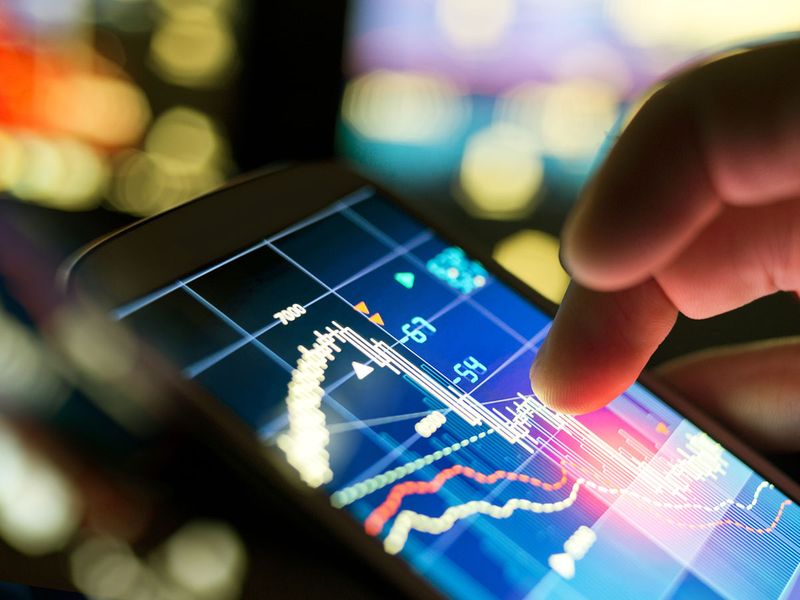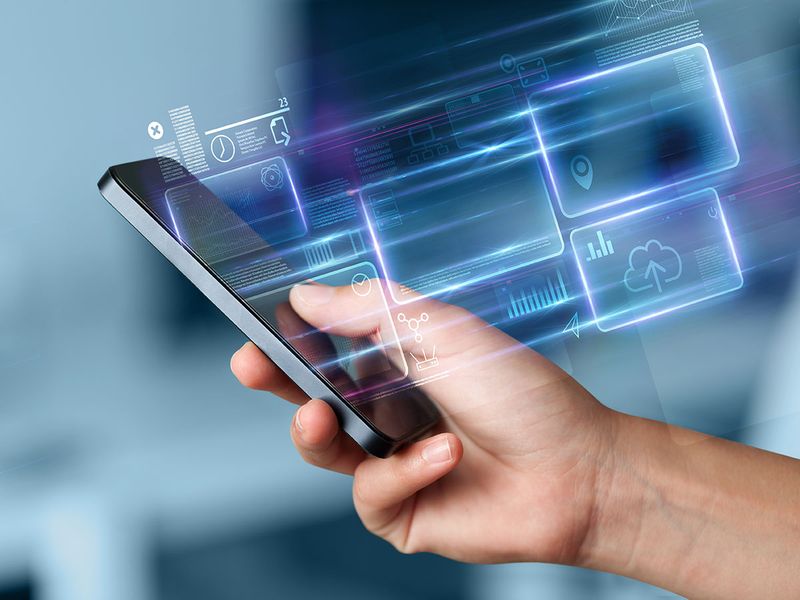
Dubai: Indian expat Kevin D’Souza, 32, has owned his iPhone 7 for years now, and sees no reason for changing the device. “I will only buy another phone when I am convinced that it will give me the same performance and stability which is very important. I have not experienced any other brand or operating system that gives me the same level of satisfaction,” D’Souza, who works as a regional sales manager for a Dubai company, said.
UAE residents have pushed their deadline to purchase smartphones to every three years from previously one to two years. Added to this, with the pandemic pretty much holding the world to ransom, smartphone users seem to be showing signs of fatigue in the UAE.
Pushing back upgrades
“Earlier, when smartphones came out with their releases, there was a big difference in performance and technical specifications from the previous year. Newer apps required phones with updated and advanced hardware. Thus, we were bound and somewhat obliged to change phones to be able to use newer applications and keep up with market trends,” D’Souza said.
However, smartphones produced in the last three years still support applications developed now and many manufacturers guarantee updates and support for phones for a minimum of two to three years to encourage people to buy their brands. “Thus, you now see more people keeping up with their phones for at least two years,” said D’Souza.
Take this: Several mobile operators now offer "24 months" bundle offers which further encourages people to keep using existing devices. The iPhone is one device that revolutionised the mobile phone domain by combining and bringing together a touch screen, good camera, solid and stable operating system and a high performance hardware bundled together all in one device.
Adam Irshaid and Zack Koenig, 17-year old French expat students living in Dubai agreed. “My phone is two years old and I have no plans of changing it anytime soon. All I need my phone for is internet and to make phone calls. The camera has never been important to me,” said Irshaid.
Koenig said: “Phones are a fundamental part of today’s society. I don’t think they have reached their all-time high, considering there is always something that can be improved technologically. As long as it works and has the right technological ability in terms of minimal function glitches, easily downloadable music systems, and good camera quality (just to name a few) I am happy.”
The French student said he has not upgraded his phone in the last three years and it is working well. “The last phone I had only lasted a little over two years. This shows an overall improvement in the quality of the smartphone industry.”
Indian expat Sandesh Patil, 35, programmatic director agreed also that smartphone buyers are getting fatigued with the plethora of options. “If you see the screens, we now have phones that are reaching nearly 100 per cent screen-to-body ratio.” Patil said: “Holographic displays, eco-friendly smartphones, educational tools, flexible frames. I imagine the future phones will rely more on integrating our physical lives with our digital lives. They probably won’t resemble the handsets we’re used to now. They’ll be built into other devices and products. Imagine a pair of glasses that can display a digital overlay on top of your physical surroundings.”
No limits
He said his Huawei Mate pro30 is a little over a year old. Patil is considering to switch to iPhone 12. “There is almost no limit to what I do with a smartphone these days. Work, entertainment, listen to productivity podcasts, brush up my skills, learn a new language, declutter your inbox, planning ahead, reading books, learn a new skill, networking — reach out to your industry professionals to make yourself visible. For me, a phone is both functional and fancy.”
Lebanese expat Hicham Eid, 30, working as a digital sales manager in Dubai, however said, the word ‘fatigue’ for smart phones was a bit harsh. Sure, the gap has been increasing for people switching phones — and it is now clearly leaning towards three years. “But remember, we are in the era of smartphone brands polishing their products from all angles, i.e., design, technology, speed and more. That’s a good place to be right now as a consumer as these smartphones will accommodate our lives in a much better way,” said Eid.
He said those looking for flying phones will be left disappointed. “People looking to maximise efficiencies around personal, social and career networking will be in for surprises when brands innovate, i.e., flexible screens, dual screens. For me, I’m looking for efficiencies — I care about my battery duration, the speed of my processor, and a smartphone with no limitations,” said Eid, who is enjoying his iPhone X, which he bought two years ago. “I usually upgrade every three years as that is when the wear outs happen. If an innovative model came along, I would be interested, however. My upgrade would be either a new iPhone 12 or the Samsung Galaxy Fold 2.”
Smartphone a utility tool
“The smart phone is a utility tool, completely functional — I use it to connect with my family, my friends and my colleagues through it. With today’s features, I don’t really have expectations beyond the current market norm, but I’m always ready to be surprised.”
Another French expat Sabrina Maubert, 50, working as a sales and administrative coordinator said: “Ever since I relocated to Dubai from New York, I found myself using the social network even more. It has helped me to remain connected to family and friends. That’s crucial for me as it eases my everyday life. Pictures are very important to me so the camera quality is essential. I use my smartphone to chat, send voice messages, documents, videos, social network and then to call!”
Maubert said as far as fatigue regarding smartphones go, she said it all depended on age of the consumer and point of interest. “My phone is a Samsung 8. I will probably get another one for Christmas maybe the Samsung S20. I am very much interested with the camera set-up and its primary 108MP sensor, it’s one of the best to me.”
Searching without typing: 5 things that could happen to your smartphone
The future personal communication gear may look nothing like anything you hold in your hands today
Jay Hilotin, Senior Assistant Editor
DUBAI: For more than a century, until the mid-1990s, telephones were primarily used for making calls. Until then, the internet existed only in labs, hooking up universities. Twenty or so years later, the world totally went bananas over smartphones. The entire reason for being of a telephone has changed completely.
Only a few years ago, the use of facial recognition as phone password seemed whacky too. Now, large touchscreen have taken over keypads. Super HD cameras allow for 3D facial ID that helps keep hackers at back (at least in theory, anyway). Today, phones are used as music player, chat/email device, exercise monitor, web browser, game machine, voice recorder, movie camera, film editing and display device, and a host of other whiz-bang functions. Who would have known phones would do all these within that short period of time?
Now, let's take a peek into the future real quick. What would smartphones look like in the next 25 years? What features will they have that would look like mad science today? These are the top 5 on my list (feel free to add):
1. Type with your mind, search without typing a word

Today, you can unlock your phone with your face. With services like Google Assistant, Samsung Bixby and Apple Homepod, your devices can be trained to recognise your voice. Now, get this: think of doing a Google search simply by thinking about a subject. No typing. In the not-too-distant future, phones can keep track of our thoughts too, in a sort of mind-machine interface. This brain-computer interface (BCI), sometimes called a neural-control interface (NCI), is a where an external device (smartphone) can take commands directly from the brain.
Many companies (Facebook, Neuralik, AlterEgo) are tinkering with direct neural interface or brain-machine interface (BMI). With computer input via mind control, it promises to help people with hand deformities or those suffering from Parkinsons. No need to search for and click an app to open it. No need to stretch your finger all the way to the top of the screen to tap it. MIT researchers are working on a gear that allows a user to converse with machines with only their thoughts. The future phone may take on an entirely new form. Remember the failed Google Glass? The next phone could look just like that, just sleekier, faster, and funkier.
2. Longer battery life, over-the-air charging

Current power storage technology is bulky, with low power density. This is about to change. The changes will come on two fronts: battery chemistry and wireless charging. Today, you always run out of juice on your smartphone. Even high-end phones, with massive batteries, only last 2 days, max. When battery is down, you either plug it in for hours or place it over a charging pad (in supported models).
Now, imagine a different future, when with over-the-air charging. In 2019, a tech company called Energous has rolled out a WattUp Mid Field transmitter: put your phone within three feet and it starts charging. And what works for phones would also work for electric vehicles.
Now, BMW has rolled out wireless charging for its EVs. Imagine if phones and electric vehicles also get charged as they move. That may require more powerful transmitters to allow for over-the-air charging at great distances, constantly charging your phone — and also your watch, headphone, car, ship, drone plane — from afar. And your battery has 100% charge all the time? That would usher in a new revolution, the way the telephone, electricity and internal combustion engines changed life on earth.
3. Trade stocks/forex from anywhere

Trade absolutely anywhere, except in the North and South poles or in densely-populated cities, where fibre is available anyway. With projects like Starlink, a constellation of thousands of low Earth-orbit (LEO) acting as low-latency internet cellsites, this in theory can match the speed of fibre optics-based connection available to NYSE, London, or Tokyo stocks traders.
So, with a smart phone, everyone can track millisecond gyrations in stocks, commodities or forex markets, and make money (or lose lots of it), based on their own reading of market trends. You could be lying on a beach in some tropical paradise (provided it's not being hammered by a typhoon) while making millions on spot or day trades.
4. Elastic/stretchable displays

Another crazy little thing: and it's already knocking on our doors. Flex display technology is coming to your next phone device. A number of foldable phones are already out: Samsung Galaxy Fold, Huawei Mate X, FlexPai. It's just a matter of time for them to become standard. But what if, instead of folding or unfolding movement, you're able to stretch a screen to increase its size, sort of like strething a chewing gum? Just pull the phone screen diagonally, from two corners. There are innovators, like the one from LG, that had been commissioned to pursue development of "stretchable" screens that can elongate them by up to 20%.
In 2017, Samsung announced a prototype of a stretchable display, able to be dented up to 12mm without causing damage. That display just bounces back to its original flat shape — similar to a trampoline — so it’s almost like the future is here. Besides stretchable displays, US researchers have also developed the first stretchable integrated circuit. Alternatively, phones of the future could be equipped by powerful lenses that project crisp moving images onto walls. This type of design would let you quickly increase the size of the device when watching videos, but still keep the phone's form factor enough to fit in your pocket.
5. 6G/7G to infinity

So you have a 5G phone, or aspiring to have one. Now, that's old news. 6G is just a breath away, and so is 7G. Simply put, 6G will succeed 5G (which in turm succeeded 4G, etc) as the next generation of mobile data networks. It's touted as significantly faster than 5G, at speeds of ~95 Gb/s. Never mind if a real 6G network does not exist today. Several countries — China, South Korea and Japan — have already shown interest in 6G. Theoretically, 6G could supersede the existing networks and help make a completely new type of internet.
Using higher-frequency radio bands, 6G promises much faster speeds and lower "latency". Nothing is etched in stone — even the term “6G” could be called something else. But here's one fact: big changes are in the offing for internet technology as a whole. This pandemic — with two-year-olds competing with adults for mobile data — has shown us that the bandwidth, latency and throughput available are never enough. We've all become mega consumers of internet data at record rates. We'll leave the discussion on 7G some other time.
Latency is a time delay between the cause and the effect of some physical change in the system being observed. Within gaming circles, is also known as as "lag", in other words, the trip time from the browser to the server and back. It is obviously desired for this time to remain as close to ZERO as possible. But there can be a few things at work that prevent that affect latency times.
Bandwidth determines how narrow or wide a pipe is. The narrower it is, the less data is able to be pushed through it at once and vice-versa.
Throughput is the amount of data which can be transferred over a given time period.














